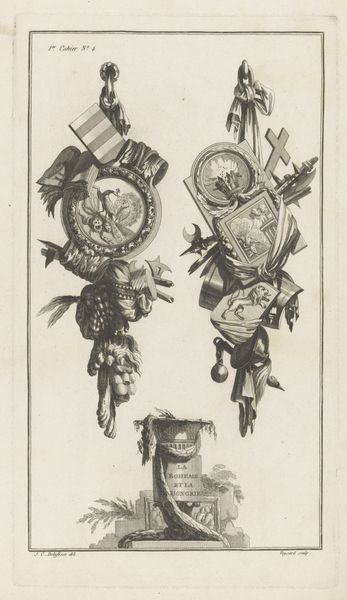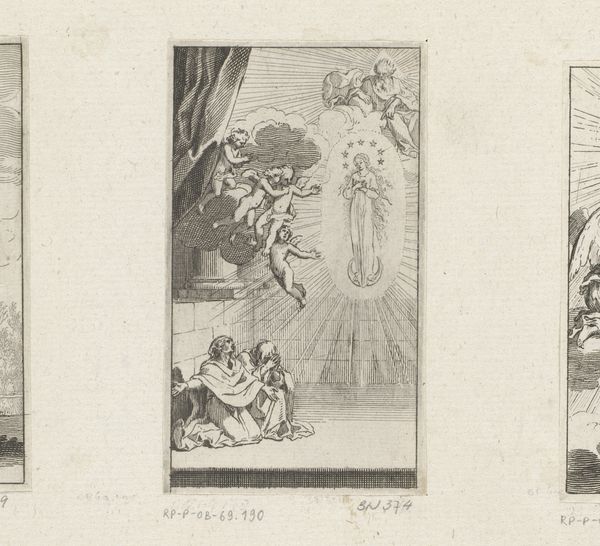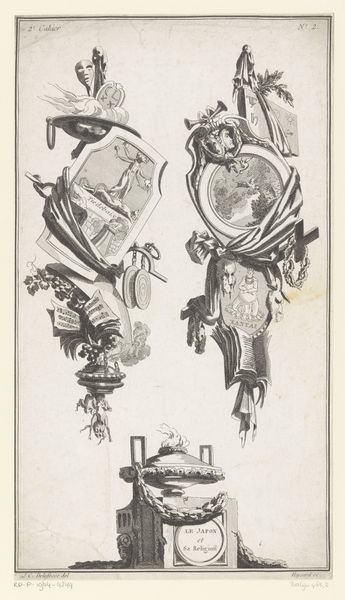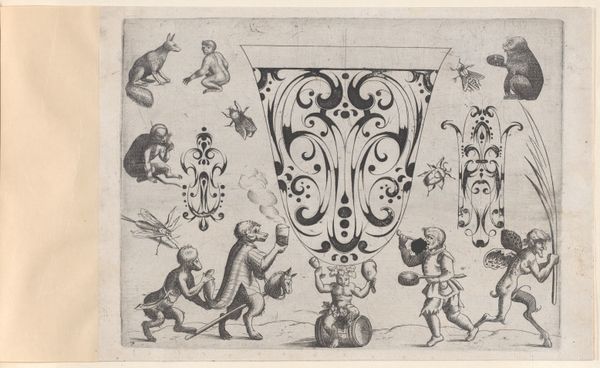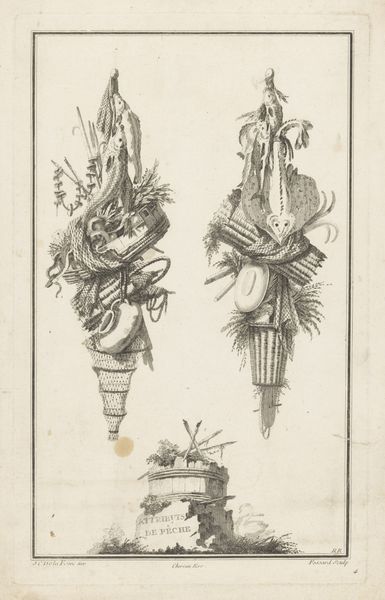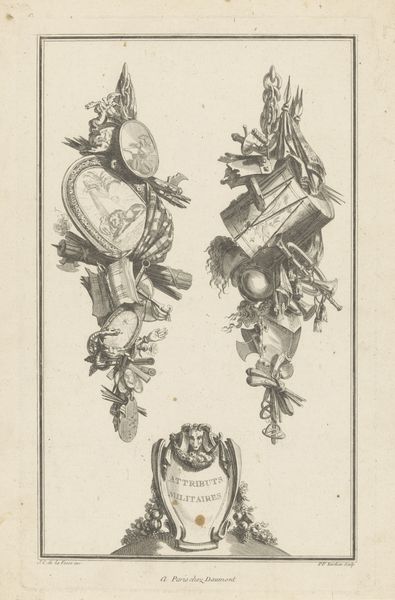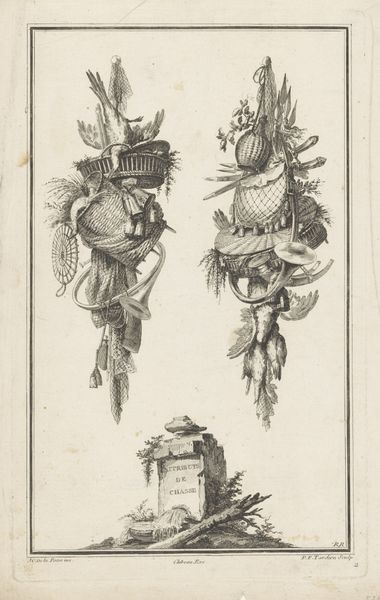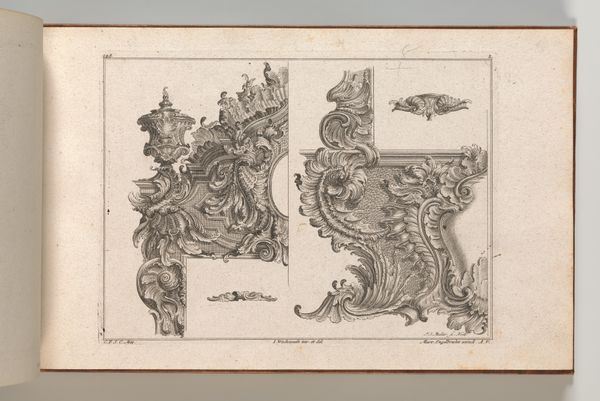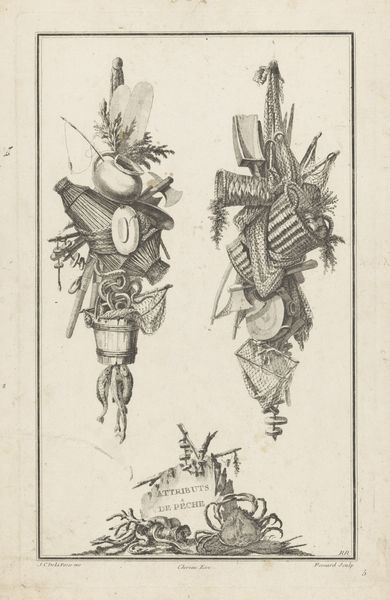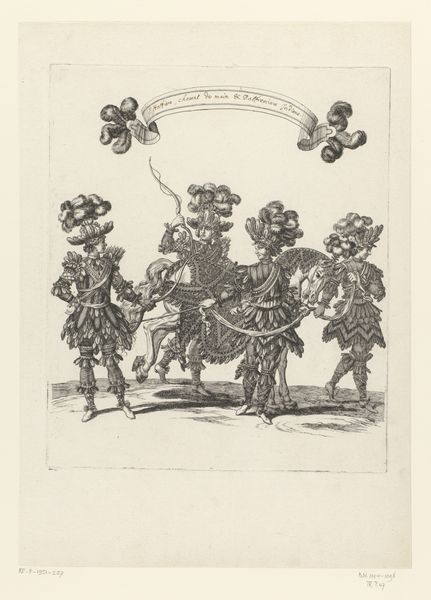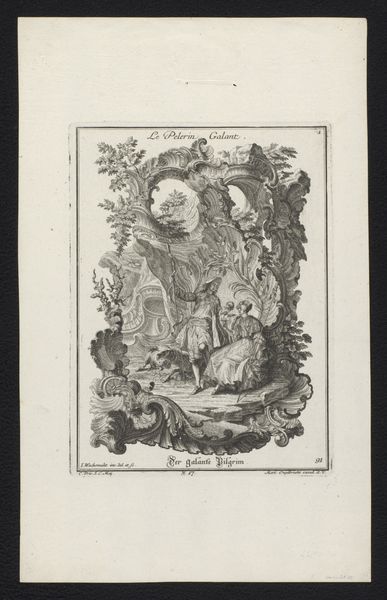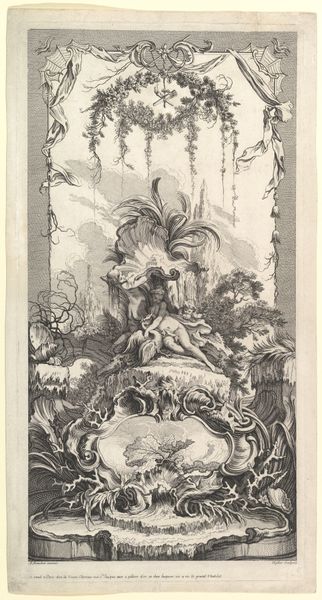
Kaart van het dijkgraafschap Drechterland (eerste deel van boven) after 1723
0:00
0:00
hendrikdeleth
Rijksmuseum
print, engraving
#
baroque
# print
#
landscape
#
engraving
Dimensions: height 668 mm, width 506 mm
Copyright: Rijks Museum: Open Domain
Editor: So, this is Hendrik de Leth’s "Kaart van het dijkgraafschap Drechterland," made sometime after 1723. It's an engraving, and it feels…well, it’s both ornate and practical, showing a map with these elaborate crests and little scenes. What jumps out at you about this piece? Curator: Immediately, I see a fascinating interplay between the supposed high art of cartography and the very tangible process of land management. This isn't just about aesthetic representation, but about the material and social reality of controlling water, reclaiming land, and defining property. The engraving medium itself, with its reproducibility, speaks to wider accessibility and use, perhaps challenging the elitism associated with singular artworks. What do you notice about the figures depicted? Editor: I see that there are working people on the lower half. One man has a net and seems to be catching...wind? What do the class differences of the images indicate about the people, labor, and value assigned to Drechterland? Curator: Exactly! And that brings up questions of labor, ownership, and even exploitation. De Leth isn't just creating an image, they are participating in, and possibly critiquing, a system. Consider the man using the net and juxtapose him against the upper heraldic emblems that probably indicate upperclass wealth. Editor: It's interesting how the method of production, engraving, creates access to something that's used for governing natural resources. Curator: Yes, the accessibility offered through printmaking allowed for broader participation. But let's not overlook how this distribution reinforces certain ideologies and power structures. Editor: I never would have looked so deeply into an engraving. I guess everything is touched by money and labor, in a sense! Curator: Precisely! Thinking about art through the lens of materials and production allows us to unpack these hidden narratives.
Comments
No comments
Be the first to comment and join the conversation on the ultimate creative platform.

